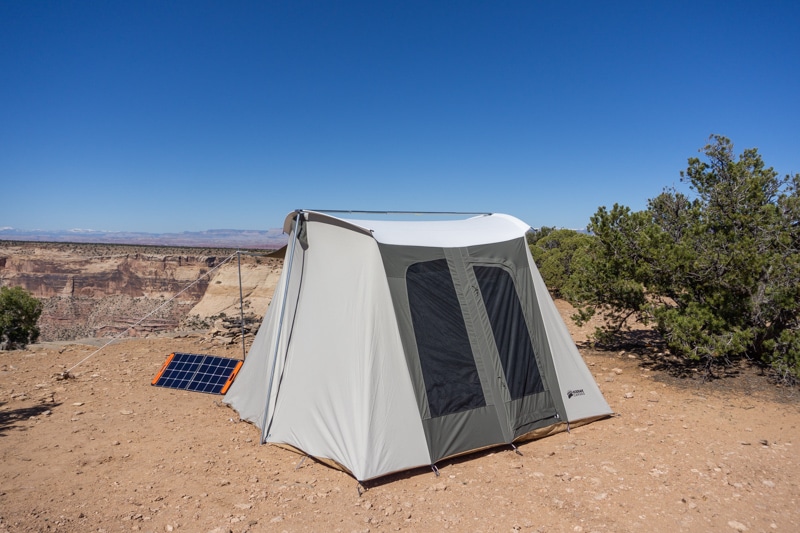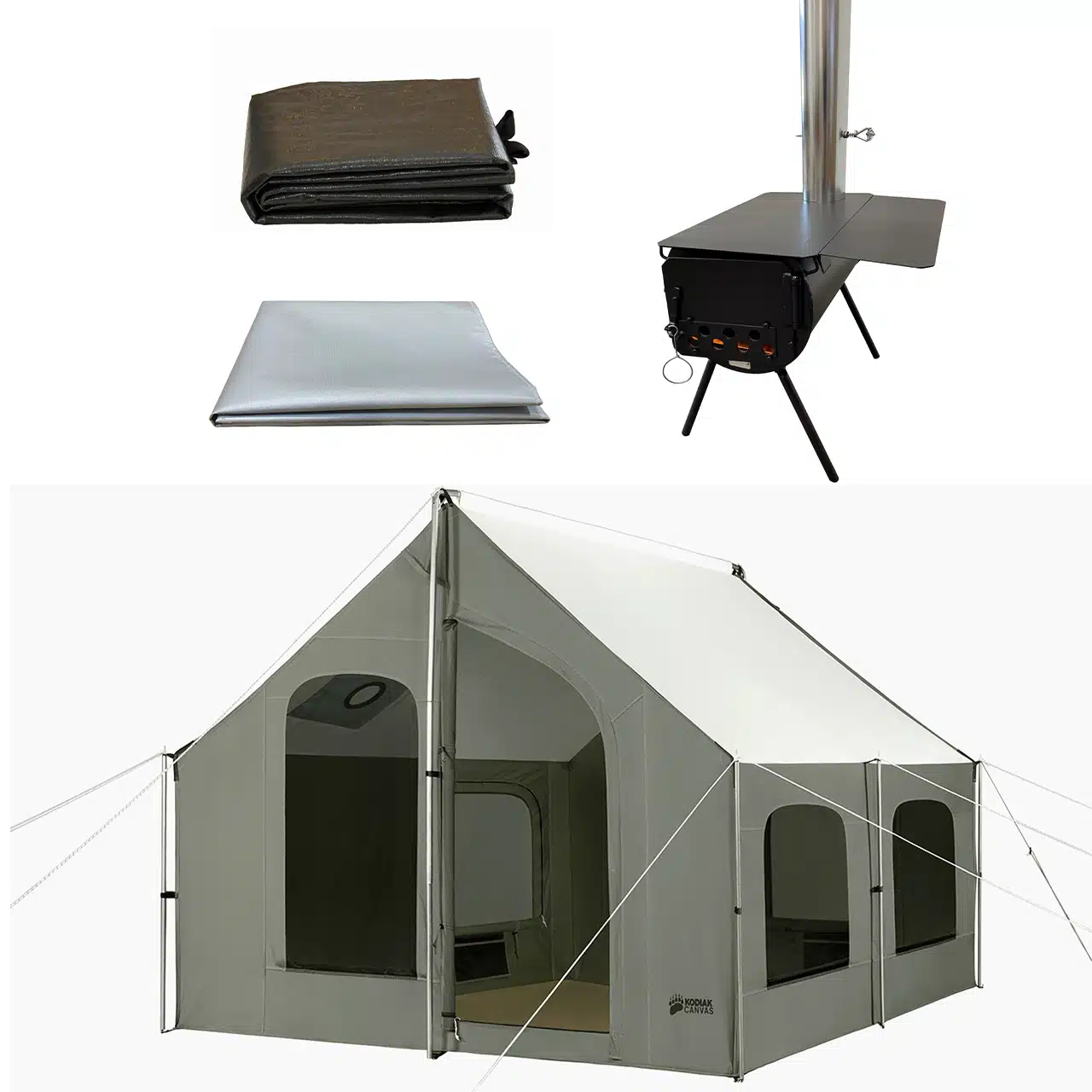I was researching a tent to use for Fall camping trips and found myself venturing down the rabbit hole of the fascinating world of canvas wall tents.
It was exciting to see all the options, but it was a bit overwhelming to know which one of these large tents were right for me. I created a simple checklist below, but first, let’s define it.
Note: some links in this article may be affiliate links where I earn a small commission depending on the marketplace.
What is a Wall Tent?
A wall tent has 4 vertical walls with a strong framework and a large footprint. The walls are made with heavy-duty canvas making them capable of handling harsh weather conditions.
Wall tents are known for being spacious and durable making them a favorite for hunting trips, basecamps, and any camp that needs a reliable shelter for several people and their gear.
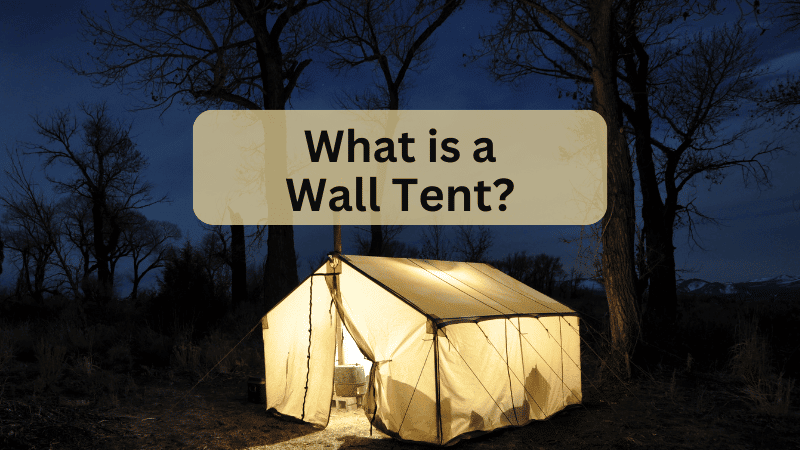
A wall tent (also known as a Safari tent or Outfitter tent) will stand the test of time. It is also one of the few tents that can be safely outfitted with a wood stove which makes them a great option for winter adventures.
However, wall tents aren’t the right choice for all occasions. They have a huge footprint, are difficult to set up, and come with a high price tag.
Let’s talk about the pros and cons and to determine if a Wall Tent is right for your trip.
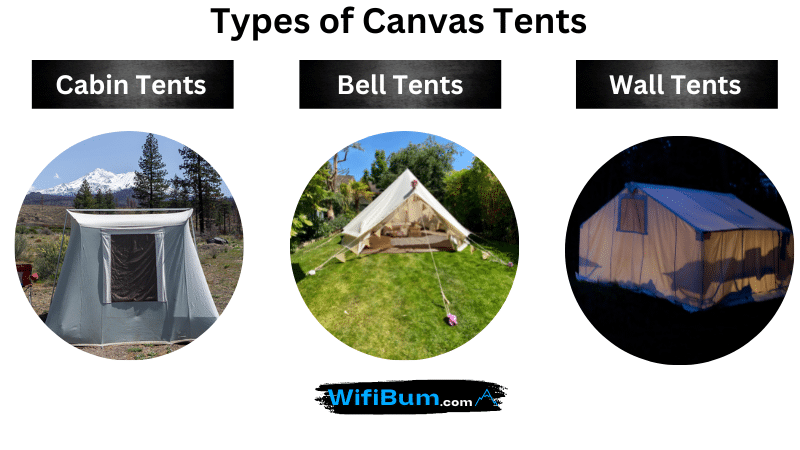
When Should I Use a Wall Tent? A Checklist

Wall tents are not for your average camping trip. You only need them in specific situations. But when you need them, you REALLY need them. Otherwise, go with one of the best camping canvas tents.
Related reading: Bell Tents vs Wall Tents.
Trip Length and Group Size
Wall Tents are best suited for longer trips and larger group sizes.
Because of the long and complex set up, I recommend using them on trips of 3 nights or longer with a group size of at least 2.
Wall tents are not easy to set up and take down. The tent is used with a purpose where simpler or smaller tents cannot be used. If they get wet, you have to dry them at home and probably have to set it up again.
Although it’s possible to set up some wall tents by yourself, it can be a frustrating task and is a much more pleasant experience with another person along.
On a solo trip, Springbar and Kodiak make smaller canvas tents that can be set up and taken down in 10 minutes and are easily set up with one adult. They can also handle rain and high winds, but not to the extent some wall tents can when properly staked and guy lined out.
Rain or Shine: You’re Going
When poor weather will not cancel your trip, it’s good to be prepared for anything.
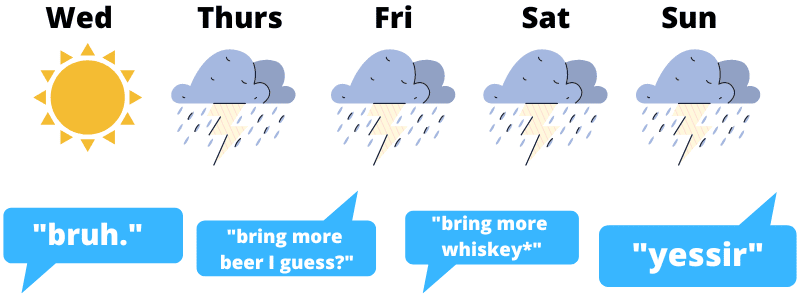
This is the real selling point for walled canvas tents. You use them when the weather can or will be ugly.
Hunters rely on canvas wall tents because their ability to handle extreme conditions. Hunting trips are planned well in advance and you’re going no matter what. You also need the extra space to keep all your gear safe and the ability to dry out your gear.
In addition, several types of wall tents have modifications to allow a wood burning stove. They will keep your tent warm and better allow you to enjoy the trip compared if you were just relying on a small propane heater or had nothing at all.
Terrain Allows for a Large Footprint
Finding a flat, clear area of 100 square feet or more can be a real challenge in certain terrain.
This might be obvious, but it’s a real consideration. When I first set up a 10×10 tent, I couldn’t believe how much space it took up. I had to use a rake and clear the debris and was at a slight angle.
In some areas, it’s not always easy to find large 100+ square feet of clear, flat ground without a tree or boulder in the way.
I’ve found that going from a 10×10 tent to a 9×7 tent makes a huge difference. It may not seem like a lot, but it’s 37% less ground space you need, but you still get the headroom and all the other benefits of canvas tents.
If you’re going 10×14 or larger, gets substantially harder to find good spots to set up the tent in certain types of terrain.
Is A Wall Tent Overkill?
On some trips a Wall Tent is simply overkill and way too much tent for the situation.
Check out a canvas tent such as a Springbar or Kodiak. They can be just as spacious, easier to set up, and can handle pouring rain and decent wind.
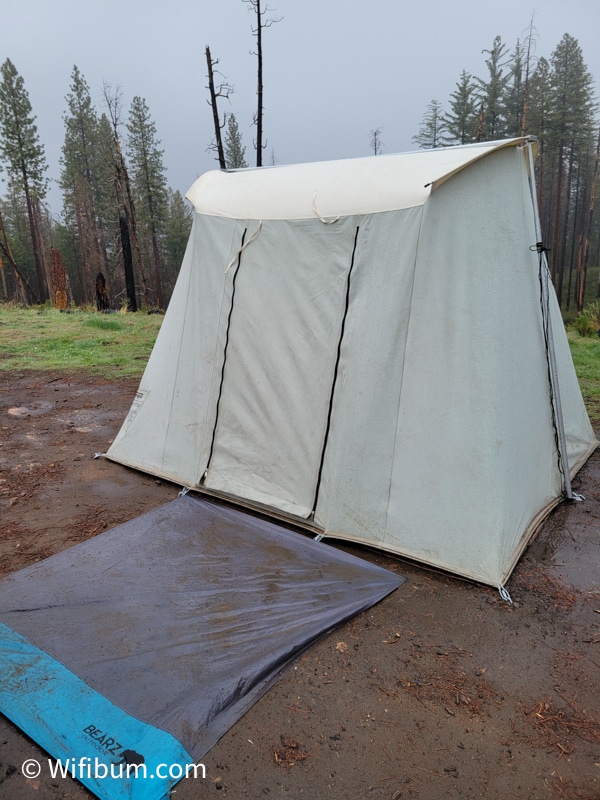
A basic canvas tent can be outfitted with stoves and a stove hole (think chimney) as well.
If you expect high winds greater than 35mph, I think upgrading to a walled tent is worth the peace of mind because of the extra support from the guy lines that aren’t found on tension-rod tents.
Wall Tent with Stove Jack
Tent stoves allow a 3 season canvas tent to become a 4 season tent. It’s a great way to stay cozy in colder environments. All the major wall tent companies offer options with stoves.
When choosing a wall tent with a stove, you will lose the amount of useable space in the tent.
It’s about 25 square feet. Manufacturers place tent stoves in the corner of a wall tent. For safety reasons, the stove needs to be placed away from the tent walls to prevent a fire hazard.
The stove creates a “dead space” where you can’t place gear between the stove and the tent walls.
Setting Up a Wall Tent – A How To Video
White Duck Outdoors is one of the primary wall tent brands. The video shows campers setting up one of their wall tent to give you a better idea of the process.
Related Questions on Wall Tents
How Much Does a Canvas Wall Tent Cost?
Wall tents cost between $1,200 and $3,000 depending on materials and size. Canvas tents with less of a framework such as a Kodiak tent can cost as little as $700.
The Kodiak 10x10 is perfect for families and is considered a 6 person tent.
Which Wall Tent is Right for You?
There are 3 primary brands of Wall Tents are:
- Davis Tent (link to their site)
- Kodiak Canvas (link to their site)
- White Duck Outdoors (link to their site)
They all provide 3 and 4 season canvas tents and have similar designs.
Not all tents are equal. Some use plastic tubing in parts and are not as durable. Steel is the most durable material followed by an aluminum frame. Although aluminum isn’t as strong as steel, it weights much less.
Davis Wall Tent Review
Davis tents are made in Denver, CO with canvas treated in Georgia. Like the famous Springbar Canvas tent, Davis Wall Tents are proudly made in the U.S.A. Their side walls are made of strong 10oz canvas make them rugged and durable.
A review of their videos makes you feel right at home. Here is there video on how big of a wall tent you might need!
Kodiak Canvas Wall Tent
Kodiak imports their tents from China. They are a lower-priced competitor compared to Davis Tent.
China has a history of making cheap knockoffs of lower quality.
However, Kodiak Canvas is a rare exception. I recently reviewed a U.S. Made Springbar vs a Kodiak Canvas Tent after using both for months. Read my review here.
Kodiak Canvas has several options for wall lodge and cabin tents. Their most popular wall tents are the 12x9 and 12x12 and can be outfitted with wood burning stoves.
White Duck Outdoor Wall Tent
White Duck Outdoors imports their products as well. Although they don’t disclose it, their website is vague which makes me assume they are imported especially based on the price.
They have good reviews, good marketing, and have brought 2020 marketing and promotion to the canvas tent world. It’s the only brand you’ll see advertising on Facebook, Instagram, and has marketing material that doesn’t look ancient (ie: Davis Tent has many old 240p videos and Kodiak’s website looks like my nephew did it in his high school coding course).
I have yet to experience White Ducks products, but I will be buying one soon and comparing it to other canvas tents I’ve used. I expect it to be quite similar to Kodiak.
Conclusion
Wall Tents have very specific use-cases. Hunters love them. Long-term campers love them. But if you’re looking for a sturdy and durable tent for a casual weekend trip, it’s best to look at a basic canvas tent like a Springbar (my review) or Kodiak (my review).
If you want a quick rundown of the benefits of canvas, click here.

